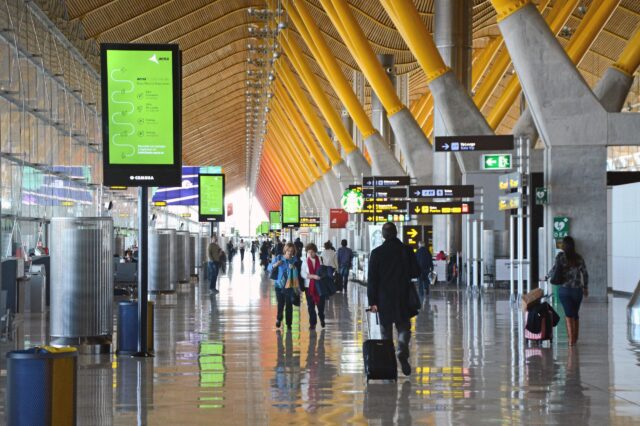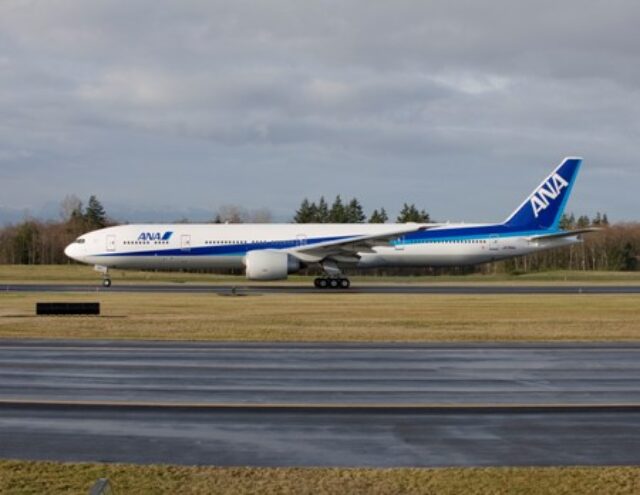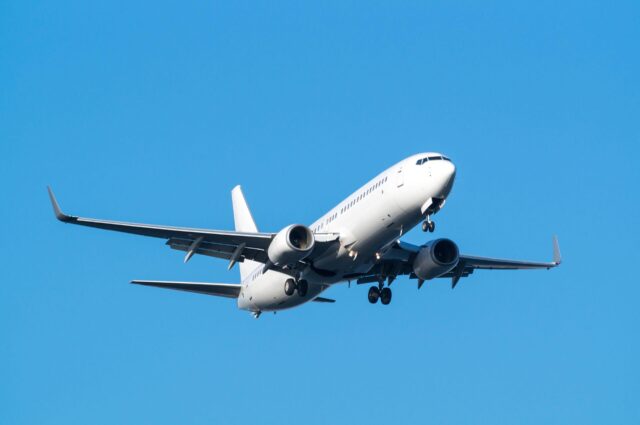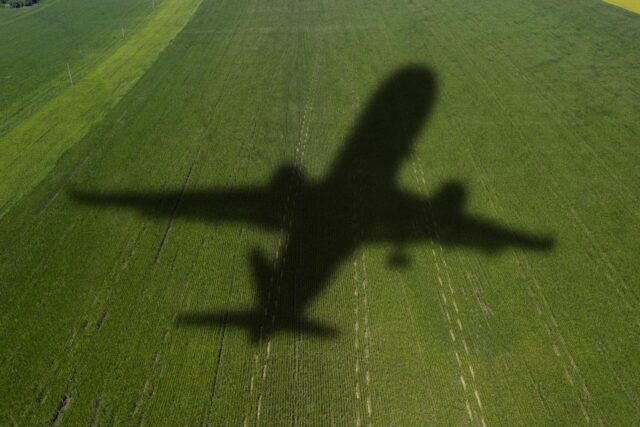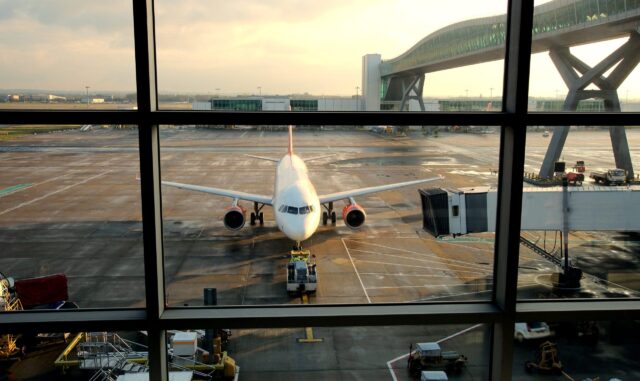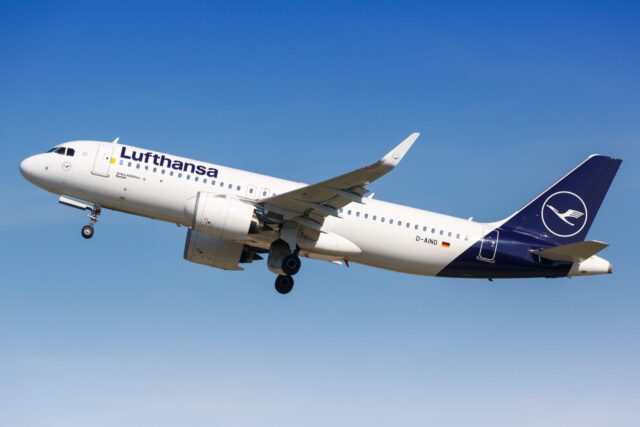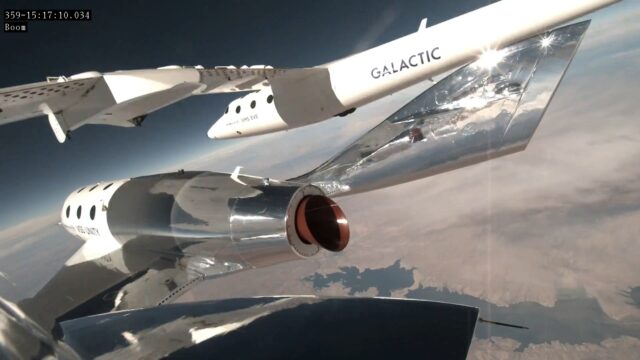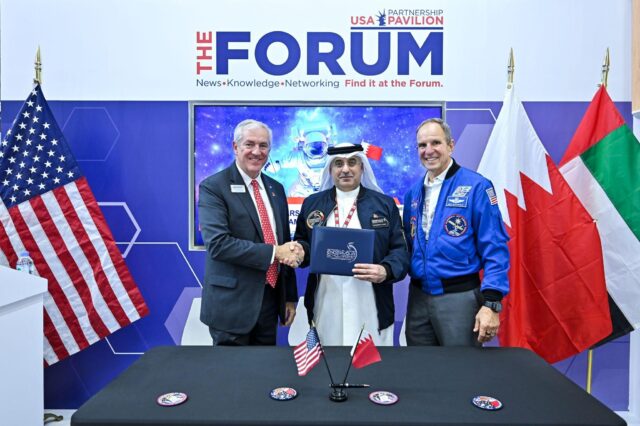Oh Canada! Why Canadian firefighters are battling Californian fires

President-elect Donald Trump (backed by his billionaire sidekick, Elon Musk) have threatened to impose hefty tariffs on Canadian imports, have deliberately insulted Canada’s President (referring to him as a governor, as though Canada were not an independent sovereign state) and have declared that they intend to annex Canada through “economic force.”
And in America’s hour of need, what have the Canadians done? Canada has done what Canada has always done, and has stepped up to the plate to support and assist its neighbour. Firefighting CL-415 amphibians from Quebec’s forest fire protection agency, SOPFEU, have been deployed to bolster the LA County Fire Department’s own resources under an existing arrangement that is now in its 29th year, and which sees two aircraft deployed to California for 90-120 days from September.
Quebec’s Public Security Minister, François Bonnardel, has promised further support to California Governor Gavin Newsom. “California is currently living through difficult times due to wildfires. The governor … can count on the government of Quebec and on SOPFEU to support him, if necessary, in this fight.”
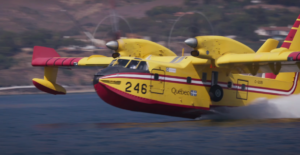
More Canadian firefighting expertise is provided by Coulson Aviation of Port Alberni, British Columbia, who are on a 24/7/365 contract to provide a quick reaction force, funded by power company Southern Cal Edison. This sees three Chinooks based at Orange County, LA County and Ventura County, with an ‘Intel’ spotter S-76.
Alberta’s Premier Danielle Smith has now said on social media that Alberta is also working with the federal government and the Canadian Interagency Forest Fire Centre to assess California’s needs, and is preparing to send water bombers, helicopters and incident command team support to help battle the wildfires now ravaging large parts of Los Angeles.
The White House has now announced that it is co-ordinating with Winnipeg’s Canadian Interagency Fire Centre, which is to provide two additional CL-415s from Quebec.
Canada offers some useful capabilities that local agencies cannot.
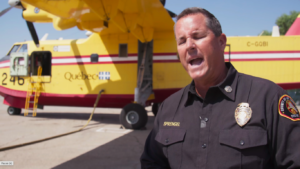
In 2022, Pat Sprengel, Battalion Chief of Air Operations for Los Angeles County Fire Department explained the significance of the CL-415 ‘Super Scooper’.
“The Super scooper idea started back in 1994, our first year of operation with the Super scoopers. It followed a rough year wildfire wise for us in 1993, from that Los Angeles County Fire Department figured that we needed to augment our fleet of aircraft at LA County, and thus we reached out to Canada and the government of Quebec for the CL-415, These aircraft are a tremendous tool for us when we battle wild land fire. And the nice thing about these aircraft is they are extremely fast, and we can get quick water to the fire, which hopefully we can use to keep those fires small and contained. So it’s a phenomenal aircraft for us, and a phenomenal tool in fighting our wildland fires.”
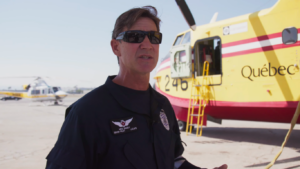
Mike Sagely, Senior Pilot with the Los Angeles County Fire Department said that: “This aircraft is unique in that it carries water rather than the pink phoscheck that you see. And interestingly enough, we treat this aircraft very similar to the helicopters. In fact, we consider them essentially as brothers, in that we work them using the same methodology. So a couple of the great advantages of this aircraft is the speed of the aircraft. It gets to the fire rapidly. That means we get water on the fire quickly and buy precious time. The second thing is that they carry a great deal of water. as I mentioned before about how we utilize them, similar to helicopter, We typically place them in a direct attack mode, which basically means they drop water directly on the fire, and they bring lots of water to the fire as well. We have pre staged, or pre planned water sources throughout our county, because it’s so very large, and that speed of the aircraft really allows them to come in, make that drop, get back over to the water source, pick up the water and get back to the fire very rapidly. The other thing that’s very necessary for us is that they’re one of the few aircraft that actually can dip water or take water out of the ocean, salt water. We can’t do that with the helicopters because of how damaging it is to them. That’s extremely important in areas like Malibu as well as Catalina Island, which is also in LA County as well. When we run these together with the helicopter, we have what I refer to as that one-two punch. We typically put the helicopters up close to the crews that are working on the ground. We keep the fire down so that they can do their job. We might move a little bit ahead, but we generally use the Quebec’s much further up on the fire. With a fire that is very large, with a lot of fire intensity, that can almost be too much for the helicopters. The CL-415s bring in that large volume of water, and we work them up well ahead of the crews, which keeps the fire behaviour in check. And then as we progress up the fire line, it’s almost like walking into that nice, calm room where they can do their job. So we use those together in a very tactical way.”
Canada is also able to provide useful rotary wing capabilities. British Columbia’s Talon Helicopters is flying an Airbus AS365 N2 Dauphin night fire attack medium helicopters for Alberta.
The Dauphin has a “very solid three-axis autopilot system”, allowing it to undertake NVG firefighting. The Dauphin is equipped with a Simplex 240-US gallon (901-litre) belly tank, which can be filled by snorkel in about 20 seconds. Fire retardant foam is mixed into the water in the tank before it is deployed. The Dauphin may be en route to California, perhaps with two more NVG-capable Alberta contract aircraft. These are a Bell 212 from Ascent Helicopters of Parksville, BC, and a Sikorsky S-61 heavy helicopter from Montreal-based Canadian Helicopters.




